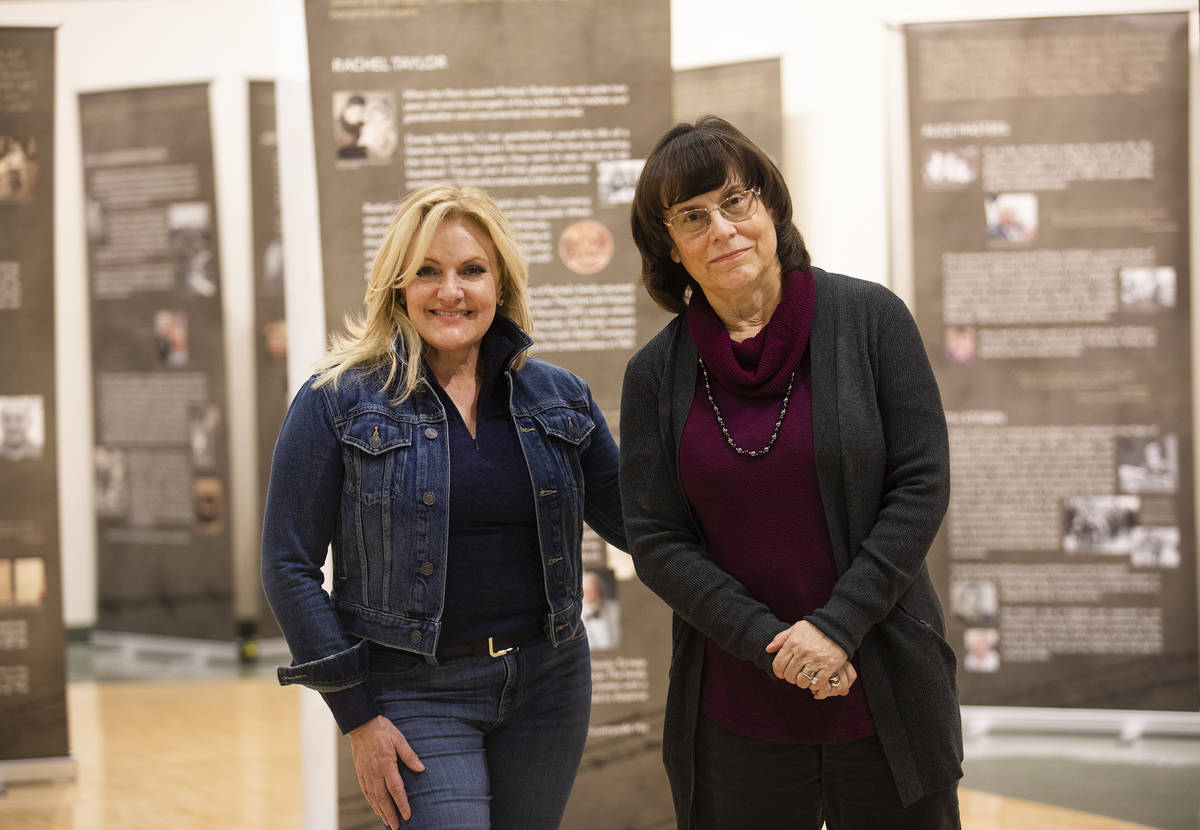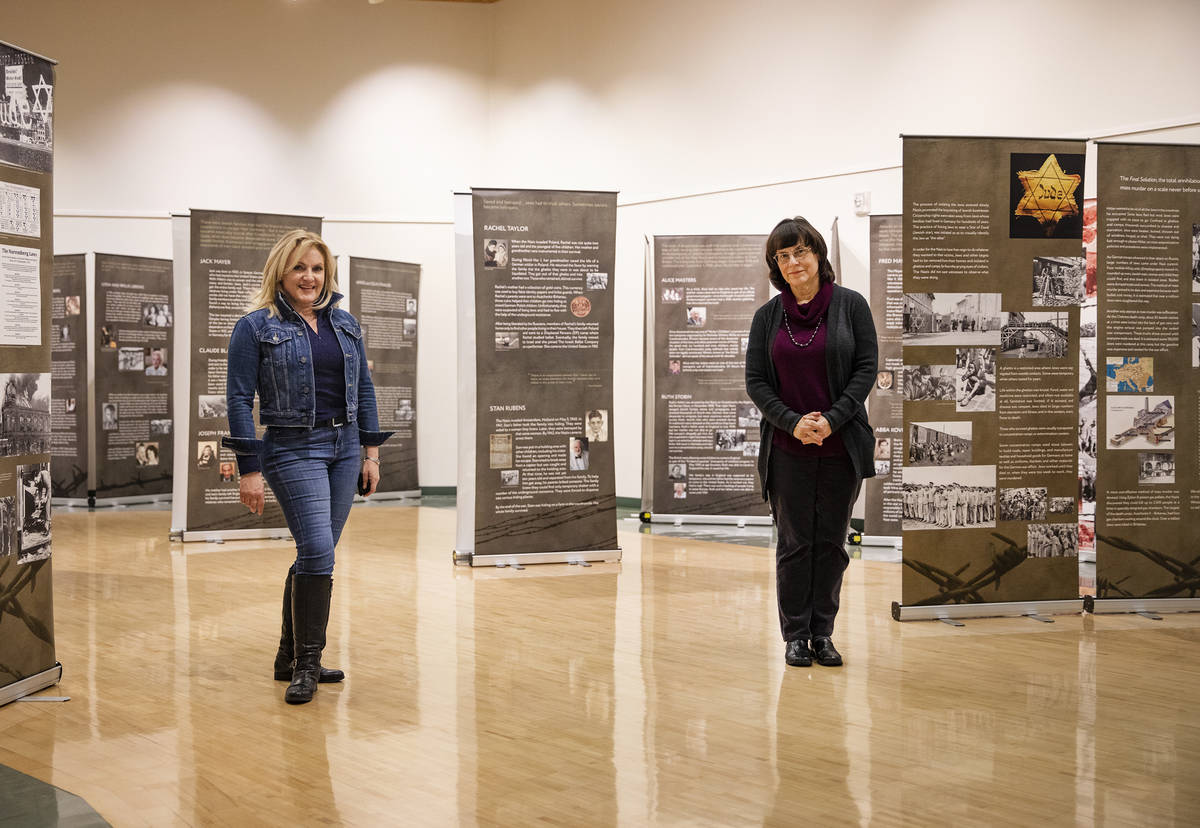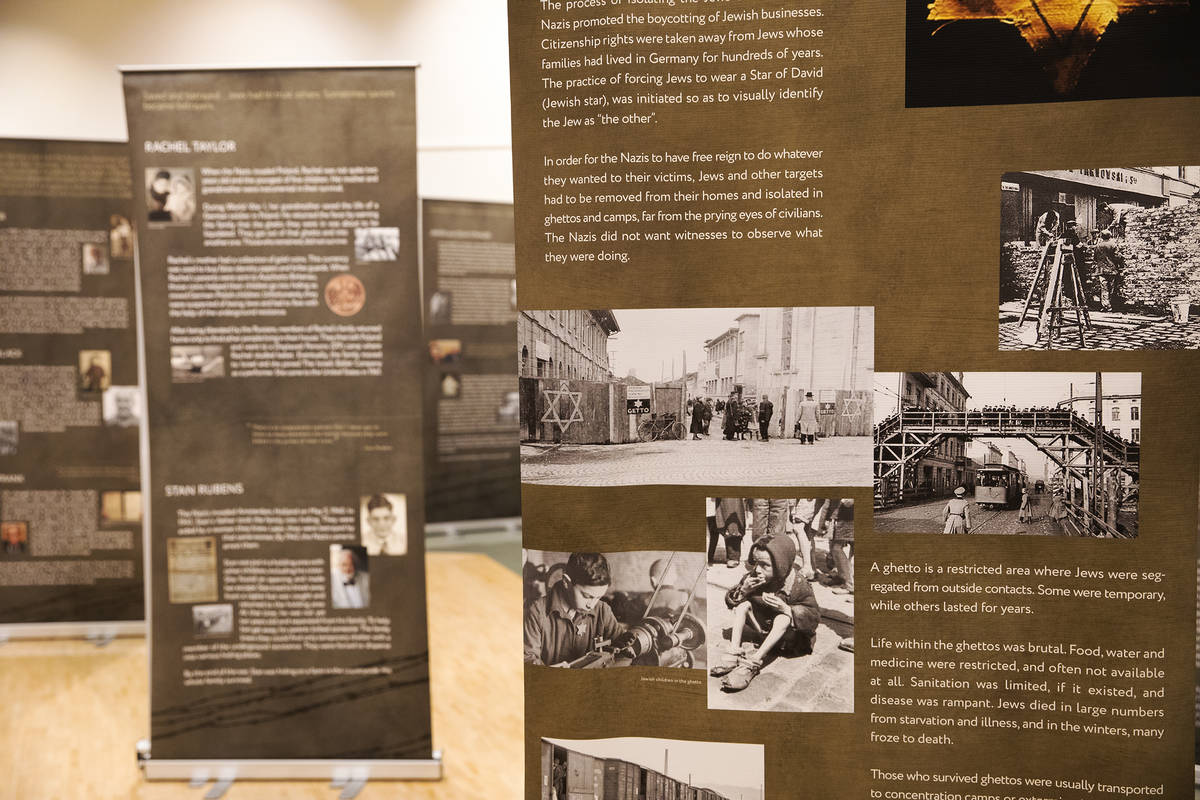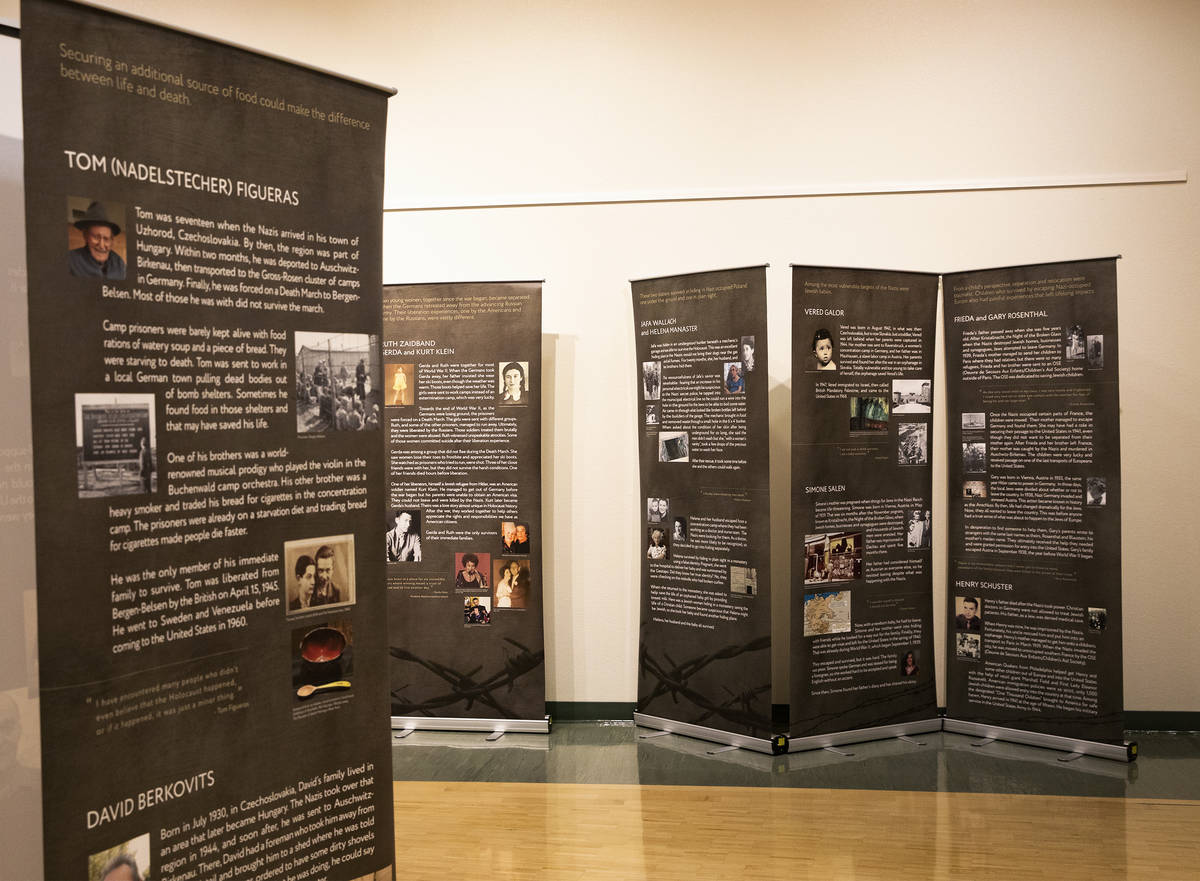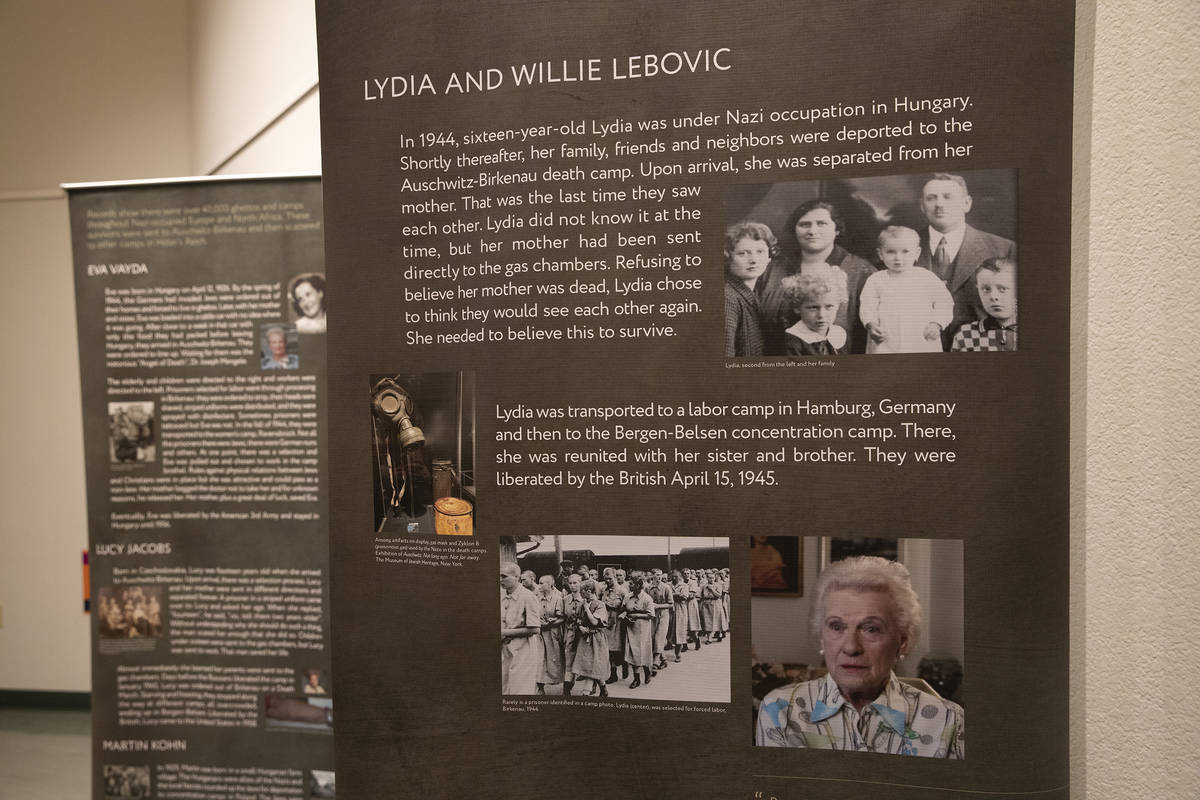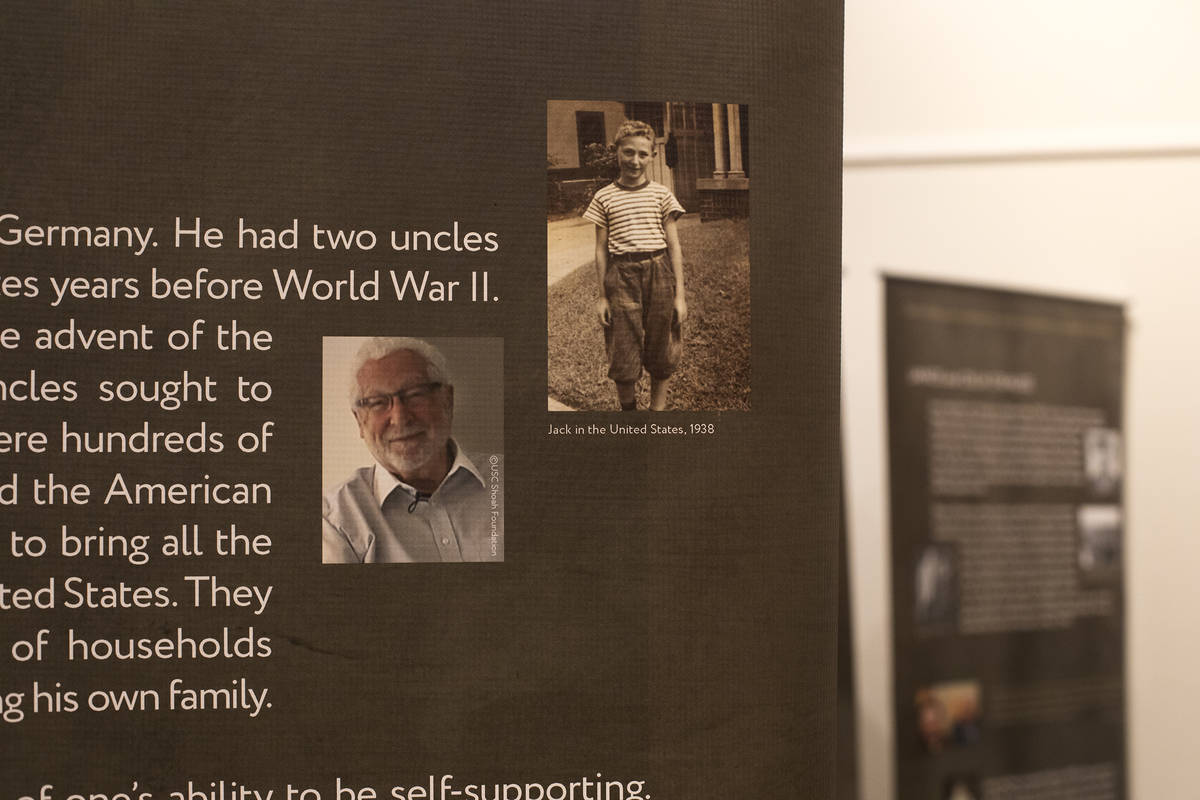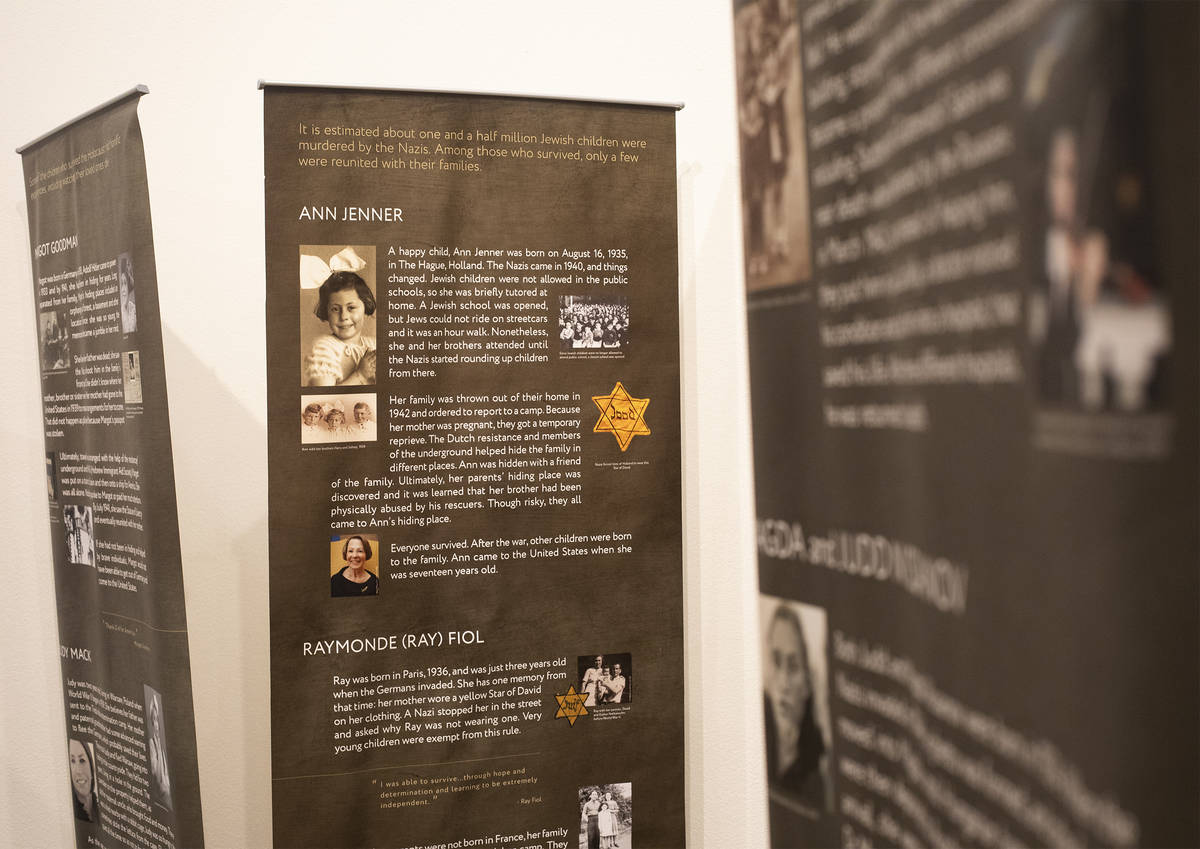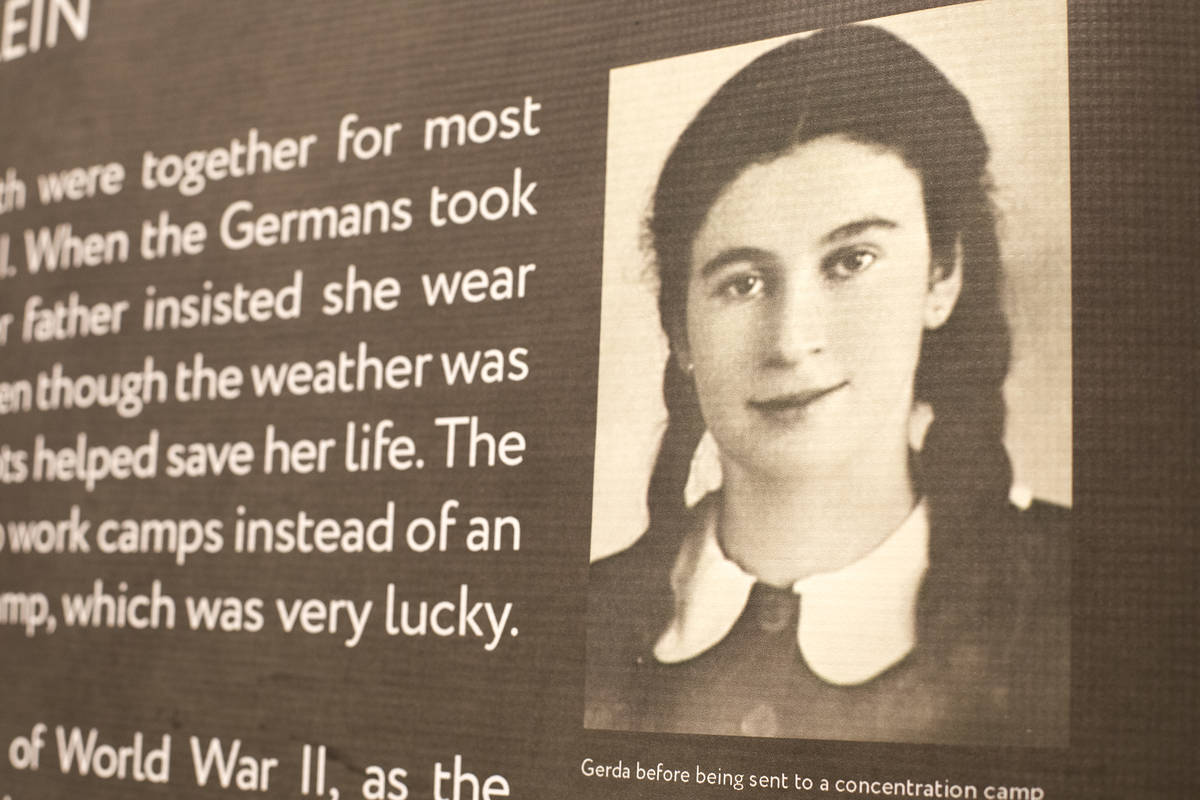‘How Did You Survive?’: Exhibit tells stories of Holocaust survivors
It’s an obvious question, and one with answers that can include just plain luck.
“How Did You Survive?”
Esther Toporek Finder says it’s the most common question survivors of the Holocaust hear, which makes it the perfect title for an exhibition co-created by Finder, president of the Holocaust Survivors Group of Southern Nevada, and Heidi Sarno Straus, Holocaust education chair for Jewish Nevada.
“How Did You Survive?” consists of panels displaying the stories of 50 people who survived the Holocaust, the systematic murder of 6 million Jewish people during World War II by Nazi Germany, which is remembered each Jan. 27, International Holocaust Remembrance Day.
The exhibition opened this month and will run until March 2 in the gallery at West Charleston Library, 6301 W. Charleston Blvd. The exhibit is free and can be viewed Monday through Thursday from 10 a.m. to 8 p.m. and Friday through Sunday from 10 a.m.to 6 p.m.
It’s the first public exhibition of the show, which also strives to put the featured survivors’ stories into context through banners that outline the background of the Holocaust.
“It’s important to know the human story, to put ourselves into the humanity of the subject,” Straus said, and to ask viewers “what would they do to to prevent something like this in the future.”
“It calls for action,” Straus added, and asks the viewer “to consider the lives that were lost and the lives (survivors) had before.”
The stories are varied. One panel tells the story of two sisters in Nazi-occupied Poland, one of whom survived by hiding underground in a bunker beneath a mechanic’s garage, the other by taking on a false name and hiding in plain sight. There are stories of survivors who lost family members and survivors who didn’t. There is even the story of a German immigrant who fled to the United States before the war and returned to Germany during the war to spy on the Nazis.
“The whole idea is to try to show the broad spectrum of human experience and what people had to go through,” Finder said.
The collection is aimed at creating empathy in the viewer on a personal level, Finder said. For example, “Can you imagine what it’s like to be in a hole in the ground for more than a year?”
At the same time, Straus said, the hope is that viewers, and particularly children and young people, “can see where unbridled hatred can lead unchecked.”
Contact John Przybys at jprzybys@reviewjournal.com. Follow @JJPrzybys on Twitter.



